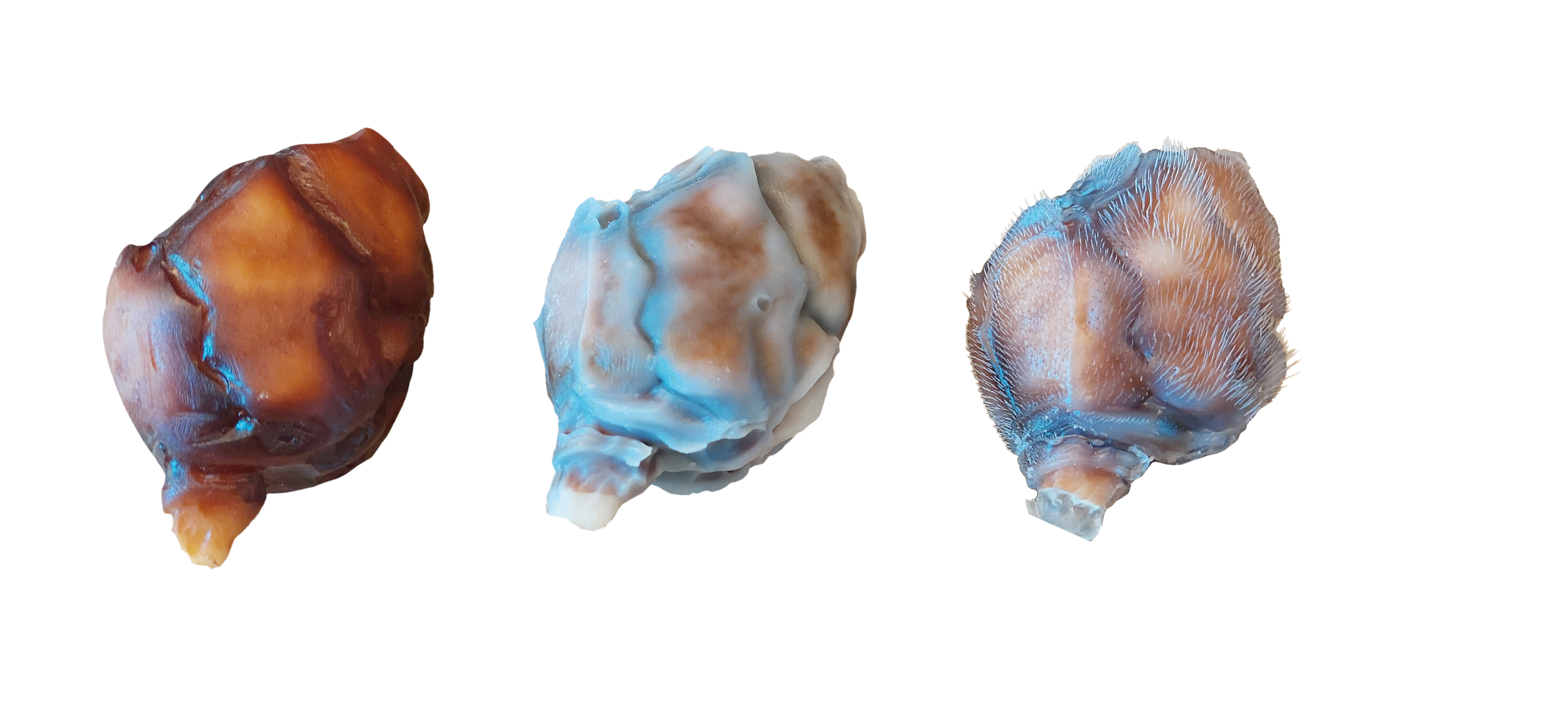Layers
In 2006 I joined a Masterclass at Benner Larsen’s workshop. Benner was a conservator (1945 - 2016). He had developed a technique to make perfect replicas of Stone Age flint tools, claws and bones by building up layer upon layer of specially dyed epoxy with different fillers to control transparencies. Benner was a skilled craftsman, a colourful and charismatic person, and a good storyteller. This course started my awareness of sub-surface scattering. We later used Benner’s techniques for a couple of models with great success. But building up the model in a negative mould was a challenge when you wanted complete control of the result. So we kind of reversed the workflow, preferring to work from the inside out - building positive instead of negative. We sanded off the element’s surface - fx an insect’s abdomen - and painted the colour scheme we wanted, then cast the outer surface on top of that. We refined the technique to perfection. Our latest insect model had three layers - a painted core, a layer on top with a semi-translucent whitish resin and a crystal clear coating with the surface structure and even hairs on top. This way, we can paint a detailed colour scheme on areas where the hairs have to be crystal clear.

